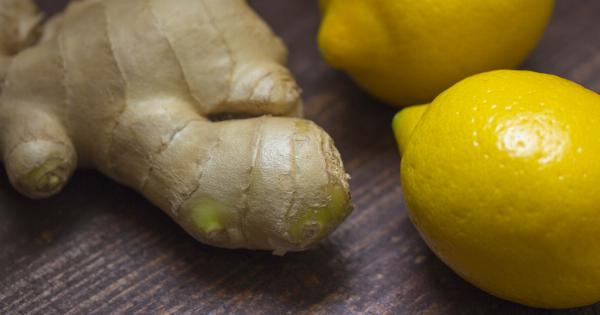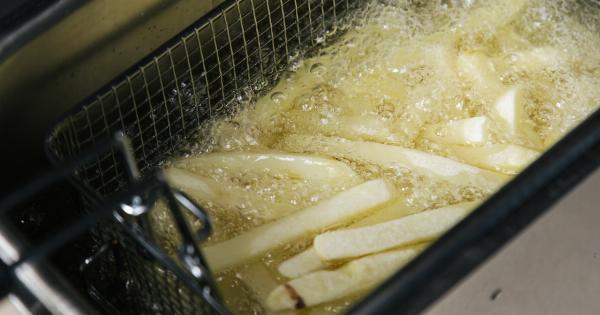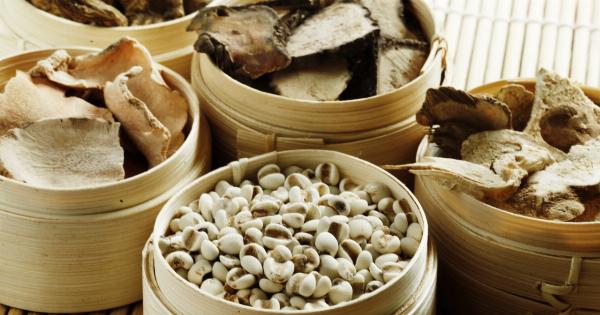Inflammation is a natural response by our body’s immune system to injury or infection.
While acute inflammation is a necessary defense mechanism, chronic inflammation can contribute to a range of health issues, including heart disease, diabetes, and autoimmune disorders. In recent years, there has been a growing interest in natural remedies that possess anti-inflammatory properties. One such herb that has gained recognition for its potential health benefits is a sweet and spicy herb.
Understanding Inflammation
Before delving into the anti-inflammatory properties of this particular herb, it is crucial to understand inflammation and its impact on our health.
When our body detects an injury or infection, it releases chemicals that prompt blood vessels to expand, allowing more blood flow to the affected area. This increase in blood flow is meant to help deliver nutrients, oxygen, and immune cells to fight off the infection or repair damage.
Unfortunately, certain lifestyle factors, such as poor diet, stress, and lack of exercise, can lead to chronic inflammation. This prolonged inflammation can damage healthy cells and tissues, leading to various health conditions.
That’s where natural remedies and herbs, like the sweet and spicy herb, come into play.
The Sweet and Spicy Herb
The sweet and spicy herb, scientifically known as “Capsicum annum,” is a versatile herb that is commonly used in culinary dishes and traditional herbal medicine.
Known for its distinctive sweet and spicy flavor, this herb has shown promising potential in reducing inflammation and promoting overall health.
Anti-Inflammatory Benefits
Studies have highlighted the anti-inflammatory properties of this herb due to the presence of various compounds, such as capsaicin, flavonoids, and carotenoids.
These compounds work together to reduce the production of inflammatory markers and inhibit the activation of certain inflammatory pathways within the body.
Research has shown that capsaicin, the active component responsible for the herb’s spicy taste, can help alleviate pain and reduce inflammation.
It does so by blocking the action of substance P, a neuropeptide involved in transmitting pain signals to the brain. By inhibiting substance P, capsaicin can effectively reduce pain and inflammation, making it a potential natural alternative to over-the-counter anti-inflammatory medications.
Furthermore, the flavonoids and carotenoids found in this herb possess potent antioxidant properties. Oxidative stress, caused by an imbalance of antioxidants and harmful free radicals in the body, is a significant contributor to chronic inflammation.
The antioxidants in this herb help neutralize free radicals, reducing oxidative stress and inflammation.
How to Incorporate the Herb Into Your Diet
Adding this sweet and spicy herb to your diet is an excellent way to reap its anti-inflammatory benefits. Here are some simple and delicious ways to incorporate it into your meals:.
1. Spice Up Your Dishes
Enhance the flavor of your soups, stews, and stir-fries by adding a pinch or two of dried or fresh sweet and spicy herb. Its unique taste will add depth and complexity to your meals while providing potential anti-inflammatory effects.
2. Infused Oil
Create a homemade infused oil by combining extra-virgin olive oil with crushed sweet and spicy herb. Allow the mixture to sit for a few days to infuse the oil with its flavors.
Use this oil as a dressing for salads or a flavorful drizzle over roasted vegetables.
3. Herbal Tea
Brew a soothing herbal tea using dried sweet and spicy herb. Simply steep a teaspoon of the herb in boiling water for 5-10 minutes. You can enjoy this tea plain or add a touch of honey and lemon for added sweetness.
4. Spice Blend
Create a custom spice blend by combining dried sweet and spicy herb with other herbs and spices, such as turmeric, ginger, and garlic powder.
This versatile blend can be used on roasted meats, vegetables, or even sprinkled on popcorn for a delicious and healthy snack.
Precautions and Considerations
While the sweet and spicy herb offers promising anti-inflammatory properties, it’s essential to consider certain precautions.
Individuals with gastrointestinal conditions, such as acid reflux or ulcers, may experience discomfort when consuming spicy foods. Additionally, some individuals may be more sensitive to the herb’s spiciness, causing irritation or allergies.
If you have any underlying health conditions or concerns, it is crucial to consult with a healthcare professional before incorporating this herb into your diet regularly.
The Sweet and Spicy Herb: A Natural Remedy for Inflammation
With its unique flavor and potential health benefits, the sweet and spicy herb is an excellent addition to your anti-inflammatory arsenal.
From reducing inflammation to alleviating pain, this versatile herb offers various ways to support your overall health.
Remember to experiment with different culinary uses and listen to your body’s reactions when incorporating this herb into your diet.
By doing so, you can explore the potential benefits it offers while enjoying its flavorful presence in your meals.































